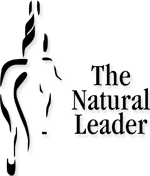 North of the 49th parallel the summer days are long and the months all too short but it is the season for my own professional development. Having just returned from four days of riding and learning my head is full as I try to put the feel of the right actions in my body. This year’s real success, I finally put meaning to the statement “own the feet”.
North of the 49th parallel the summer days are long and the months all too short but it is the season for my own professional development. Having just returned from four days of riding and learning my head is full as I try to put the feel of the right actions in my body. This year’s real success, I finally put meaning to the statement “own the feet”.
As someone who believes in the importance of having a relationship with my horses I have always been conflicted about the space between the “relationship aficionados” and the “command control individuals” attracted to the world of horses. Though as I continue to put leadership meaning to my own actions, a new perspective came to light about owning the feet. “Own the feet” defines the leadership role I assume with my horses.
I do believe Ray Hunt coined the phrase and he demonstrated it brilliantly. Putting his own style to Ray’s teaching Buck Brannaman has also mastered the concept. Buck rode three different green colts over the four days of a session I participated in and his ownership of their feet is unquestionable. The relationship absolute devotion. Buck suggested the relationship between horse and rider “is not a dictatorship, but more like an enlightened monarchy”.
It was this perspective that helped make the connection. As a leader we are responsible for the actions of those we lead. So our relationship to the horses feet is not the “I command you to put your feet there” but the “I am responsible for everywhere my horses feet are”.
While Jack and I struggle through the tasks that Buck’s horse appeared to execute effortlessly I realized the harder I tried the more I got in Jack’s way. As I eased off and created a clear vision as to what I was looking for, as I let “the pressure gravity put into my legs” out and we started to move together. We still make the dance look more like a couple of stumbling fools but it is not for lack of trying on Jacks part, it’s my responsibility to get better at feel and timing.






